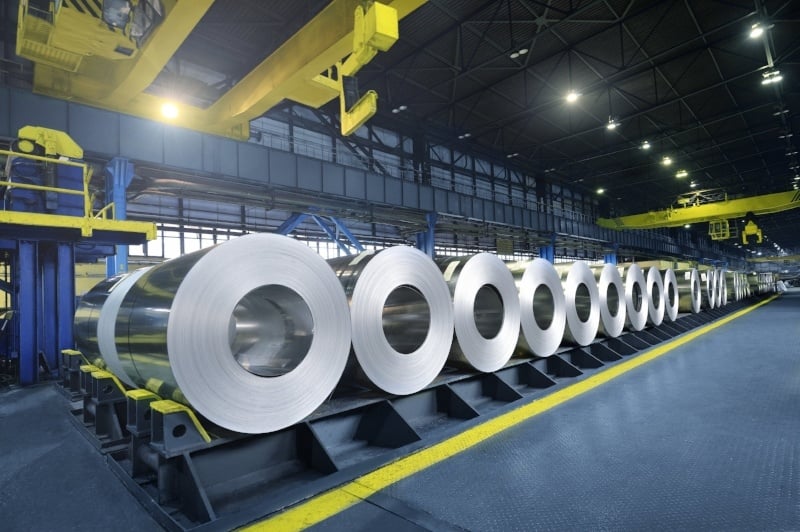U.S. Mining Reforms Are Crucial To Ensure Secure and Reliable Supplies of Critical Minerals
The Presidential Executive Order on a “Federal Strategy to Ensure Secure and Reliable Supplies of Critical Minerals,” issued on December 20, 2017,...
3 min read
Tomaso Veneroso : Mar 23, 2018 1:06:19 PM

As reported in the March 7, 2018 Wall Street Journal, some steel and aluminum manufacturers in the U.S., including United States Steel Corporation and Century Aluminum Company, are restarting previously idle mills in response to the United States' new 25% tariff on imported steel and 10% tariff on imported aluminum. Century, America's second-largest producer of primary aluminum, announced that it will be restarting a previously idle Kentucky smelter, thereby doubling its current 300 member workforce. U.S. Steel has plans to boost their capacity by restarting their Granite City, Illinois blast furnace, calling back 500 workers who were previously furloughed.
This is in reaction to the recent steel and aluminum tariffs imposed through a Presidential Executive Order signed on March 15, 2018. Although many industry leaders and members of Congress have been vocal in opposing the enactment of these tariffs, President Trump used a law last applied in the 1990's (Section 232, Trade Expansion Act of 1962), allowing for the imposition of tariffs by Executive Order, therefore bypassing Congressional approval.
According to U.S. Steel CEO David Burritt, their Granite City Works have long suffered from unfairly-traded foreign steel flooding the U.S. market. As domestic steel prices were suppressed by cheap imported steel, U.S. Steel was forced to consolidate operations, which meant idling the Granite City furnaces and laying off hundreds of employees.
Firing up the furnaces and hiring back hundreds of workers in reaction to the 25% tariff will give the company the opportunity to compete “on an even playing field,” something they've been lobbying for decades. Republic Steel, another major American steel producer, is preparing to add as much as a million tons of steel production capacity if the market demands this increase to make up for the reduction in imported steel. They believe this could bring back as many as one thousand jobs to their previously idle Lorain, Ohio facility. Other planned changes include:
Raw steel production in the United States has been steady at about 80 million tons annually since the abrupt financial downturn of 2007-2008. This represents a production level roughly one-half of what was being produced in the 1970's. Production of aluminum last year fell to approximately 741,000 tons – less than 1/3 the production levels of a decade earlier. Imports of foreign aluminum during that time period increased about 60%. President Trump says these new tariffs are meant to counteract a weakened U.S. steel and aluminum industry that represents a serious threat to American national security and military strength.
The U.S. is the world's largest steel importer, well ahead of Germany and South Korea, who respectively, rank second and third global steel imports. The U.S. currently imports about four times as much steel as it exports. The country saw a drop in steel production of about 11% just between 2014 and 2016, while demand has continued to increase.
During the past quarter-century, U.S. aluminum production has decreased drastically. Where there were once 25 operating aluminum smelters in the country, there are now only five. And of these five, only one turns out the pure, high-grade aluminum needed by the defense industry for the production of jet fighters.
China is a major aluminum exporter to the U.S. and, just recently, the Commerce Department accused Chinese aluminum foil exporters of dumping cheap foil into the U.S. at prices with which local American producers cannot compete. Donald Trump made campaign promises to bring back the beleaguered steel and aluminum industries and to “buy American first,” which is what these new tariffs are meant to facilitate.
While bringing back jobs and boosting production within the U.S. steel and aluminum industries sounds good, there are skeptics who believe the American economy could be hurt rather than helped by the imposition of the new tariffs. One question is whether U.S. producers will be able to fill the demand if foreign imports drop off significantly. With the recent price and demand increases, some believe foreign producers will continue exporting to the U.S. but that the tariffs will cause them to raise prices which will negatively affect the cost of American goods made from the more expensive metals.
With other countries talking about a “trade war” and threatening retaliation by adding tariffs to American exports brought into their countries, it's unclear if there will be any real winners. Canada and Mexico have been granted a temporary exemption. For now, the steel and aluminum industries are celebrating an apparent answer to their pleas.

The Presidential Executive Order on a “Federal Strategy to Ensure Secure and Reliable Supplies of Critical Minerals,” issued on December 20, 2017,...

Until recently, cobalt has been somewhat of a sleeper on the commodities market. It was much less in the news than other metals such as gold, silver,...

AMCAST today announced the newest addition to FAR S.p.A’s hi-tech steel castings manufacturing facility; a prototype robotic automation. The head...